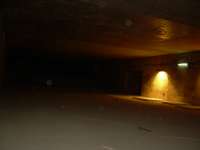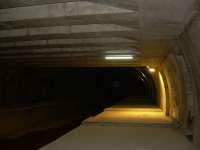The EXTRA MUROS project (2005 – ongoing)
This project is an ongoing series of urban installations in the city of Algiers where I revisit legendary places, landmark venues, urban gaps. My interventions crystallize in a space not in an artwork.
These installations are works in progress, and meant to be occasions for exchange with the audience. As unique and ephemeral works, they question the memory of each specific place, evoke timelessness, and aim to encourage the visitor towards a symbolic appropriation of this moment, outside of spaces which are officially dedicated to exhibitions.
Apart from Chapter 1 which occurred in 2005, this project has not been realized in all its different phases. This is primarily due to lack of cooperation from the authorities who regularly refuse to collaborate. These reactions overlap with full force with the purpose of my enquiry which constantly questions the status of public space and issues of appropriation and reappropriation. Even though some of these projects could not be materialised as I hoped, they are firmly routed in time and gain relevance with maturity.
The EXTRA MUROS project (2005 – ongoing)
This project is an ongoing series of urban installations in the city of Algiers where I revisit legendary places, landmark venues, urban gaps. My interventions crystallize in a space not in an artwork.
These installations are works in progress, and meant to be occasions for exchange with the audience. As unique and ephemeral works, they question the memory of each specific place, evoke timelessness, and aim to encourage the visitor towards a symbolic appropriation of this moment, outside of spaces which are officially dedicated to exhibitions.
Apart from Chapter 1 which occurred in 2005, this project has not been realized in all its different phases. This is primarily due to lack of cooperation from the authorities who regularly refuse to collaborate. These reactions overlap with full force with the purpose of my enquiry which constantly questions the status of public space and issues of appropriation and reappropriation. Even though some of these projects could not be materialised as I hoped, they are firmly routed in time and gain relevance with maturity.

